David L. Poole
A Dynamic Approach to Probabilistic Inference
Mar 27, 2013
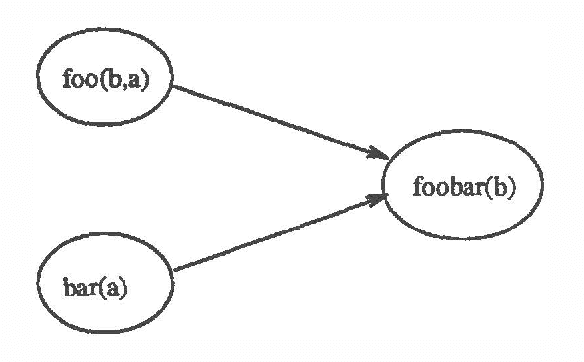


Abstract:In this paper we present a framework for dynamically constructing Bayesian networks. We introduce the notion of a background knowledge base of schemata, which is a collection of parameterized conditional probability statements. These schemata explicitly separate the general knowledge of properties an individual may have from the specific knowledge of particular individuals that may have these properties. Knowledge of individuals can be combined with this background knowledge to create Bayesian networks, which can then be used in any propagation scheme. We discuss the theory and assumptions necessary for the implementation of dynamic Bayesian networks, and indicate where our approach may be useful.
What is an Optimal Diagnosis?
Mar 27, 2013
Abstract:Within diagnostic reasoning there have been a number of proposed definitions of a diagnosis, and thus of the most likely diagnosis, including most probable posterior hypothesis, most probable interpretation, most probable covering hypothesis, etc. Most of these approaches assume that the most likely diagnosis must be computed, and that a definition of what should be computed can be made a priori, independent of what the diagnosis is used for. We argue that the diagnostic problem, as currently posed, is incomplete: it does not consider how the diagnosis is to be used, or the utility associated with the treatment of the abnormalities. In this paper we analyze several well-known definitions of diagnosis, showing that the different definitions of the most likely diagnosis have different qualitative meanings, even given the same input data. We argue that the most appropriate definition of (optimal) diagnosis needs to take into account the utility of outcomes and what the diagnosis is used for.
High Level Path Planning with Uncertainty
Mar 20, 2013


Abstract:For high level path planning, environments are usually modeled as distance graphs, and path planning problems are reduced to computing the shortest path in distance graphs. One major drawback of this modeling is the inability to model uncertainties, which are often encountered in practice. In this paper, a new tool, called U-yraph, is proposed for environment modeling. A U-graph is an extension of distance graphs with the ability to handle a kind of uncertainty. By modeling an uncertain environment as a U-graph, and a navigation problem as a Markovian decision process, we can precisely define a new optimality criterion for navigation plans, and more importantly, we can come up with a general algorithm for computing optimal plans for navigation tasks.
Representing Bayesian Networks within Probabilistic Horn Abduction
Mar 20, 2013
Abstract:This paper presents a simple framework for Horn clause abduction, with probabilities associated with hypotheses. It is shown how this representation can represent any probabilistic knowledge representable in a Bayesian belief network. The main contributions are in finding a relationship between logical and probabilistic notions of evidential reasoning. This can be used as a basis for a new way to implement Bayesian Networks that allows for approximations to the value of the posterior probabilities, and also points to a way that Bayesian networks can be extended beyond a propositional language.
Sidestepping the Triangulation Problem in Bayesian Net Computations
Mar 13, 2013



Abstract:This paper presents a new approach for computing posterior probabilities in Bayesian nets, which sidesteps the triangulation problem. The current state of art is the clique tree propagation approach. When the underlying graph of a Bayesian net is triangulated, this approach arranges its cliques into a tree and computes posterior probabilities by appropriately passing around messages in that tree. The computation in each clique is simply direct marginalization. When the underlying graph is not triangulated, one has to first triangulated it by adding edges. Referred to as the triangulation problem, the problem of finding an optimal or even a ?good? triangulation proves to be difficult. In this paper, we propose to first decompose a Bayesian net into smaller components by making use of Tarjan's algorithm for decomposing an undirected graph at all its minimal complete separators. Then, the components are arranged into a tree and posterior probabilities are computed by appropriately passing around messages in that tree. The computation in each component is carried out by repeating the whole procedure from the beginning. Thus the triangulation problem is sidestepped.
Exploring Localization in Bayesian Networks for Large Expert Systems
Mar 13, 2013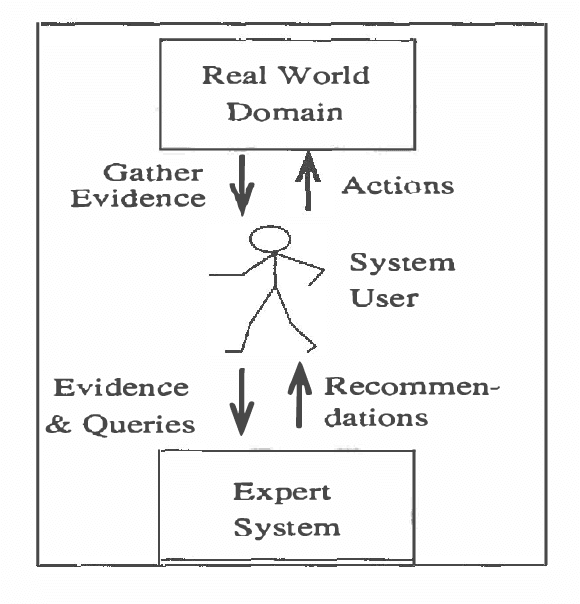
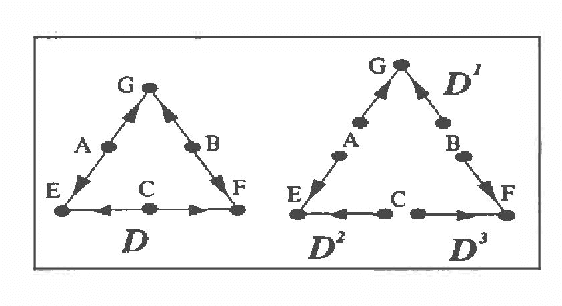
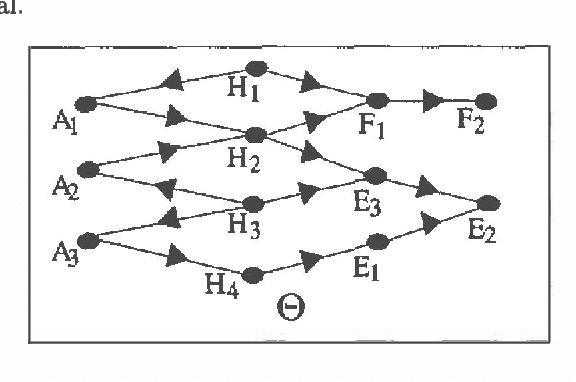
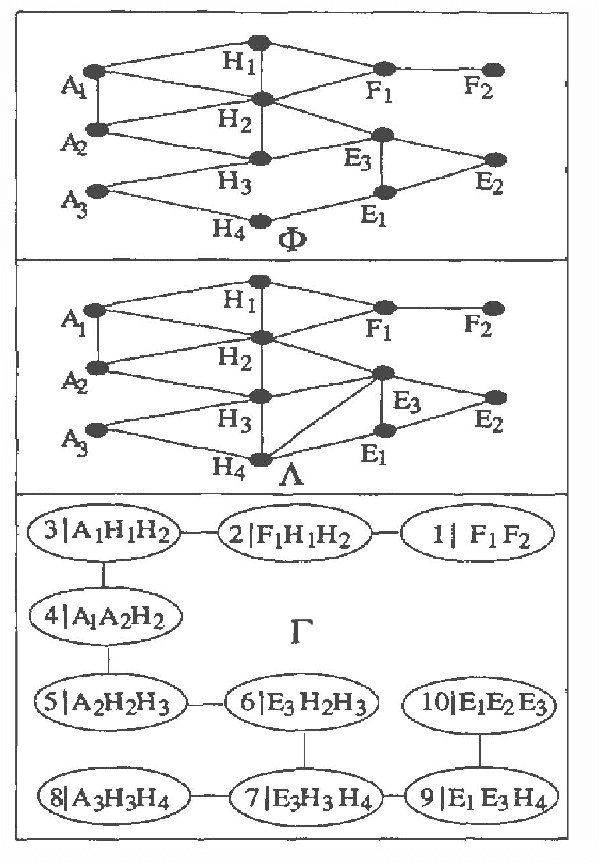
Abstract:Current Bayesian net representations do not consider structure in the domain and include all variables in a homogeneous network. At any time, a human reasoner in a large domain may direct his attention to only one of a number of natural subdomains, i.e., there is ?localization' of queries and evidence. In such a case, propagating evidence through a homogeneous network is inefficient since the entire network has to be updated each time. This paper presents multiply sectioned Bayesian networks that enable a (localization preserving) representation of natural subdomains by separate Bayesian subnets. The subnets are transformed into a set of permanent junction trees such that evidential reasoning takes place at only one of them at a time. Probabilities obtained are identical to those that would be obtained from the homogeneous network. We discuss attention shift to a different junction tree and propagation of previously acquired evidence. Although the overall system can be large, computational requirements are governed by the size of only one junction tree.
Incremental computation of the value of perfect information in stepwise-decomposable influence diagrams
Mar 06, 2013



Abstract:To determine the value of perfect information in an influence diagram, one needs first to modify the diagram to reflect the change in information availability, and then to compute the optimal expected values of both the original diagram and the modified diagram. The value of perfect information is the difference between the two optimal expected values. This paper is about how to speed up the computation of the optimal expected value of the modified diagram by making use of the intermediate computation results obtained when computing the optimal expected value of the original diagram.
The use of conflicts in searching Bayesian networks
Mar 06, 2013



Abstract:This paper discusses how conflicts (as used by the consistency-based diagnosis community) can be adapted to be used in a search-based algorithm for computing prior and posterior probabilities in discrete Bayesian Networks. This is an "anytime" algorithm, that at any stage can estimate the probabilities and give an error bound. Whereas the most popular Bayesian net algorithms exploit the structure of the network for efficiency, we exploit probability distributions for efficiency; this algorithm is most suited to the case with extreme probabilities. This paper presents a solution to the inefficiencies found in naive algorithms, and shows how the tools of the consistency-based diagnosis community (namely conflicts) can be used effectively to improve the efficiency. Empirical results with networks having tens of thousands of nodes are presented.
Solving Asymmetric Decision Problems with Influence Diagrams
Feb 27, 2013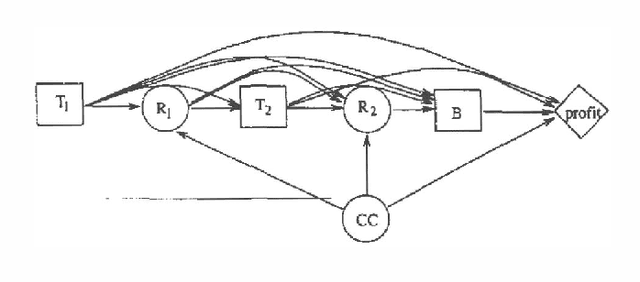



Abstract:While influence diagrams have many advantages as a representation framework for Bayesian decision problems, they have a serious drawback in handling asymmetric decision problems. To be represented in an influence diagram, an asymmetric decision problem must be symmetrized. A considerable amount of unnecessary computation may be involved when a symmetrized influence diagram is evaluated by conventional algorithms. In this paper we present an approach for avoiding such unnecessary computation in influence diagram evaluation.
Exploiting the Rule Structure for Decision Making within the Independent Choice Logic
Feb 20, 2013

Abstract:This paper introduces the independent choice logic, and in particular the "single agent with nature" instance of the independent choice logic, namely ICLdt. This is a logical framework for decision making uncertainty that extends both logic programming and stochastic models such as influence diagrams. This paper shows how the representation of a decision problem within the independent choice logic can be exploited to cut down the combinatorics of dynamic programming. One of the main problems with influence diagram evaluation techniques is the need to optimise a decision for all values of the 'parents' of a decision variable. In this paper we show how the rule based nature of the ICLdt can be exploited so that we only make distinctions in the values of the information available for a decision that will make a difference to utility.
 Add to Chrome
Add to Chrome Add to Firefox
Add to Firefox Add to Edge
Add to Edge